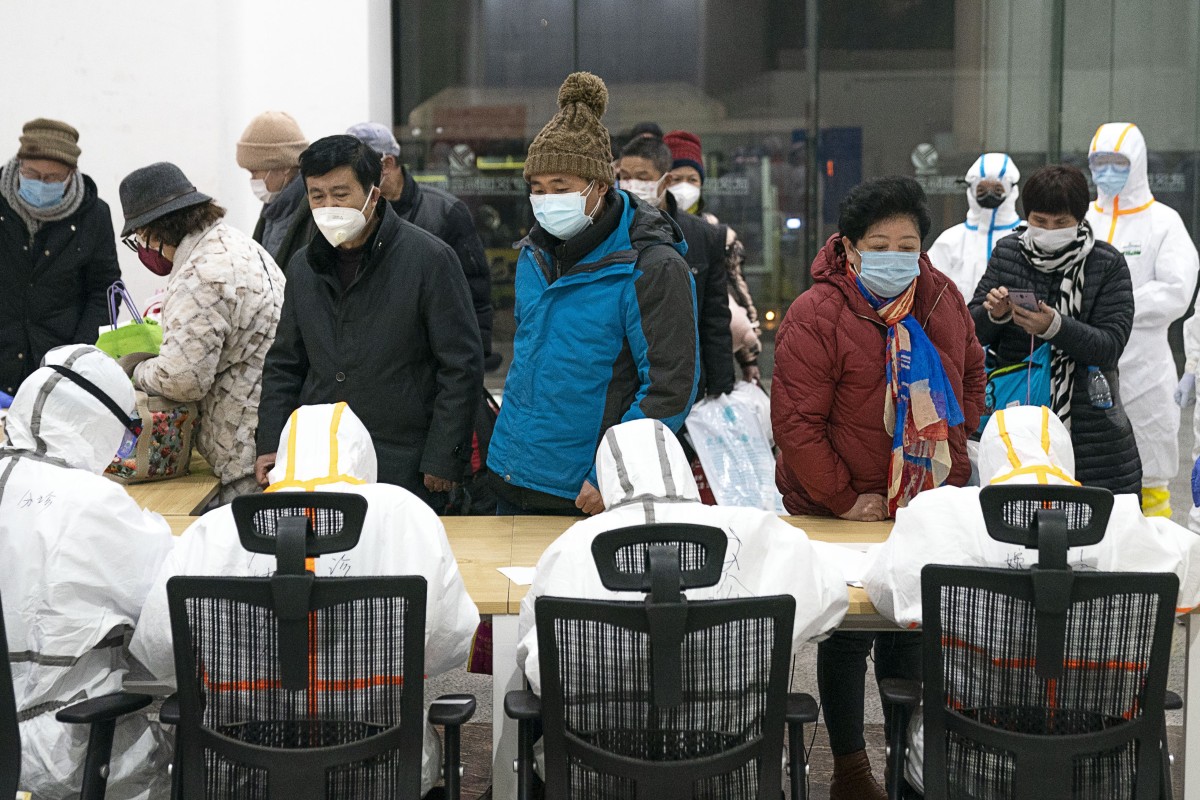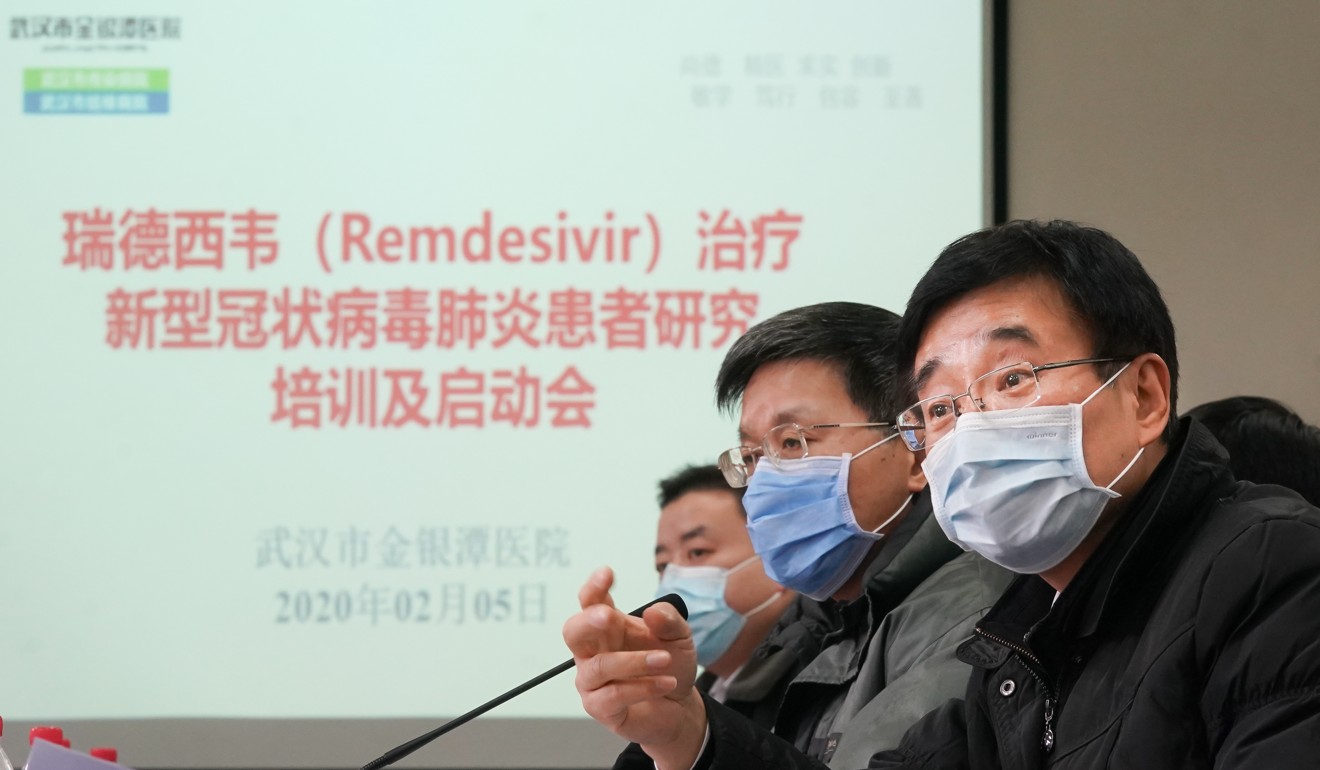Wuhan Novel Coronavirus
"The public has criticised us a lot … why? It was because some of our work was not done well." "What have we not done well? At present, the contradiction between supply and demand of hospital beds has remained conspicuous.""Honestly, we are in pain and feel regrettable that a lot of the patients who have been confirmed infected or were suspected to have contracted the coronavirus were unable to receive proper treatment at hospitals. This problem definitely has remained unresolved." Hu Lishan, deputy secretary, Communist Party, Wuhan
 |
| Medical workers in Wuhan help patients infected with the novel coronavirus check in at a makeshift hospital, converted from an exhibition centre, on Wednesday. Photo: Xinhua |
Although some authorities in China are taking responsibility for not having acted early enough in response to the initial mysterious appearances of a handful of flu-like hospital admissions in the city of Wuhan in late December of 2019, it would be hard to claim now that those same authorities are not taking the situation seriously. The 1,000-bed Huoshenshan Hospital, built in a ten-day emergency construction operated by military medical personnel is now accepting patients found to be infected with the novel coronavirus that first surfaced in an open-air live-animal market in the city.
Another hurriedly-built hospital, the Leishenshan, is now close to completion and will add another 1,600 beds, while the city of Wuhan is busy converting a sports stadium and two convention halls into what they call "modular hospitals" which themselves will have capacity to house patients with mild symptoms and which are expected to add an additional 3,800 hospital beds. It doesn't end there, another eight hospitals to offer 4,600 more beds are, as well, being built in response to the fact that 550 people have died due to the infection in Hubei province.
A drug developed in the United States to treat the Ebola virus has undergone initial testing and is on the cusp of being redeployed for use as an anti-viral medication on an experimental basis to treat for coronavirus. Remdesivic is awaiting approval for treatment as a stage-three clinical drug trial. Gilead Sciences based in the U.S., which produces the drug, is collaborating with Chinese health authorities to establish a “randomised, controlled
trial” to determine whether remdesivir can safely and effectively be
used to treat the coronavirus.
 |
| Wang Chen (right) president of the Chinese Academy of Medical Sciences, speaking Wednesday at a conference in Wuhan at which it was announced that clinical trials using the antiviral drug remdesivir have been approved. Photo: Xinhua |
"This could be more akin to a moderately bad flu, or even a more severe flu, which the world experiences every decade or so", according to Dr.Michael Gardam, chief of staff at Humber River Hospital in Toronto, as an infectious disease specialist. "Nobody's not worried. But none of us are worried currently that this is a problem in Canada. We're all worried about the potential of this becoming a problem in Canada."
 | |
"Because of the nature of how it's spreading and what's happening in China, we could unfortunately be dealing with this story for the next two years", he assayed. "In the most likely scenario, we're going to get more cases", stated Dr.Steven Hoffman, epidemiologist and director of the Global Strategy Lab at York University. "But also what's most likely is that they'll be quickly identified and contained, just like the first four cases [to be diagnosed in Canada] were."
A 50-something-year-old woman, resident of Metro Vancouver had been in "close contact" with Wuhan visitors to Canada. She became ill and was tested and treated in hospital, then released. Her sample was returned identified as positive, and has been sent on to the National Microbiology Laboratory in Winnipeg to determine whether the early diagnosis can be confirmed. She remains in quarantine in her home, as do her visitors.
 |
Although novel coronavirus may not be as fatal as first feared, the latest case is significant in that the patient hadn't travelled to China. "That's called secondary spread. That's a problem", said Dr. Isaac Bogoch, an infectious disease specialist at the University of Toronto. A viral pandemic can occur when the chains of transmission multiply and where containment efforts fail. When the virus spreads from people who were infected at the outbreak site to people they physically touched, and then went on to third or fourth-degrees of separation in various locations, is where the problem arises.
"In a week or two, we'll know which direction this is going. I still think all efforts should be on containment. But we have to prepare for the situation where that does not succeed.""If there's a bunch of them coming in, you can run around and catch them, but if you're just getting overwhelmed, lots of t hem are going to miss you and they're going to hit the ground."Dr.Isaac Bogoch, infectious disease speciailist, University of Toronto
Best-case scenario is that the health detection system will identify those in the community who present with symptoms and to isolate them until the danger of infection is past. But those in the community who are not symptomatic but who carry the virus have the potential to spread it widely. Attempting to catch everyone who might be infected before, or as soon as they land in the country becomes a problem of hit-and-miss.

Labels: China, Containment, Coronavirus, Experimental Drug, Hospitals, Remdesivic

<< Home